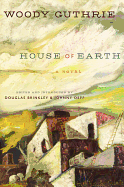
| Publisher: | Infinitum Nihil/Harper | |
| Genre: | General, Fiction, Historical, Westerns, Literary | |
| ISBN: | 9780062248398 | |
| Pub Date: | February 2013 | |
| Price: | $25.99 |
| Starred | Fiction |
by Woody Guthrie
Woody Guthrie's posthumously published novel, House of Earth, is about the connection of the people to the land and the inherent injustice of private property, themes at the heart of his best known song, "This Land Is Your Land."
Tike Hamlin has never had much, but then he falls "about as low and lousy as he can get... ending up being just another [share]cropper." Worse yet, he's dragging his beloved Ella Mae with him. Together they are tethered to a hardscrabble piece of Texas land they can never own, trapped in a one-room shack that leaks flies and dust and wind. There is still love and laughter of course, but the daily grind against indignity and despair takes its toll. The one ray of light is their dream to build a house of earth.
Experiencing firsthand the devastating dust storms that ravaged the Texas plains in the 1930s, Guthrie sought a more secure shelter for the people there and found, in the ancient adobe structures of New Mexico, inspiration for a better way of life--and for his only novel. It's impossible to avoid the obvious comparison to Steinbeck's Grapes of Wrath: In theme, ethos and character, the two books are kissing cousins; in terms of style, however, they are a breed apart. Told in the unmistakable vernacular of Woody, at once earthy and erudite, House of Earth is less a novel than an extended prose poem interrupted by healthy smatterings of folksy dialogue. Tike and Ella Mae are figures torn from the pages of James Agee's Let Us Now Praise Famous Men, but rather than leaving us on the outside to stare back at his characters' stark gazes, Guthrie gains us entry into their world. --Tom Lavoie, former publisher
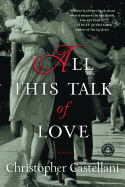
| Publisher: | Algonquin | |
| Genre: | General, Fiction | |
| ISBN: | 9781616201708 | |
| Pub Date: | February 2013 | |
| Price: | $13.95 |
| Fiction |
by Christopher Castellani
All This Talk of Love is the conclusion of a trilogy Christopher Castellani began with 2004's A Kiss from Maddalena, and it is by far the best of the three novels. Castellani has hit his writerly stride in exploring the hopes, wishes and dreams of an Italian-American family: Antonio and Maddalena Grasso, their daughter, Prima, and their son, Frankie.
Prima decides that she is taking the whole family--including her husband and their four sons--to Santa Cecilia, the Italian village where her mother was born. But Maddalena has no desire to go back to the town she left more than 50 years ago. She is estranged from her brother and sister; furthermore, her sister married the man she really loved. (A Kiss from Maddalena tells the full story.) A full-blown soap opera ensues, with Prima and Maddalena at odds about everything, not just the trip. The men in the family mostly stay out of the way.
Then Fate intervenes: Prima and her son Patrick are in an automobile accident that leaves Prima needing therapy; Frankie moves home; Maddalena begins the long slide into Alzheimer's, sometimes failing even to recognize Antonio.
Antonio, seeing Maddalena slipping away, insists they go to Italy; Maddalena goes along without objection. Prima hopes that when her mother sees her sister and brother she will recognize and forgive them. What happens in Italy is an act of kindness on Antonio's part that gives Maddalena back to Prima and Frankie for a moment--a pure act of love. --Valerie Ryan, Cannon Beach Book Company, Ore.
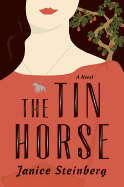
| Publisher: | Random House | |
| Genre: | Jewish, Fiction, Family Life, Literary | |
| ISBN: | 9780679643746 | |
| Pub Date: | January 2013 | |
| Price: | $26 |
| Fiction |
by Janice Steinberg
Family identity comes from a shared collection of origin stories: how parents got together, how fortunes were made or lost, why allegiances were made or ties broken. In The Tin Horse, Janice Steinberg spins a decades-spanning drama of familial discovery that examines the seismic shifts in self-understanding when the underlying legends of a family prove unreliable.
Retired activist lawyer Elaine Greenstein is packing to move to a senior community. When she runs across an intriguing clue to the whereabouts of her long-lost twin sister, she is swept back in reverie to her prewar Los Angeles childhood in the historical Jewish neighborhood of Boyle Heights. As Elaine recounts the family legends--a dangerous love for a Christian in a time of pogroms, a young girl who walked across Romania to emigrate, an entrepreneurial egg ranch in California--she also remembers the pain of learning some of those family-defining stories were less than accurate. As she gets closer to finding her sister, it becomes clear that, even at this late age, she must once again challenge herself to face the inconsistencies in family lore if she wishes to come to terms with the truth of her sister's disappearance.
Though the present-day scenes are compelling, Steinberg's writing really blossoms in her re-creation of the Boyle Heights of Elaine's youth. And though Steinberg is a mystery writer, here the "mystery" is merely a tool to uncover a sometimes painful wisdom: Families often build their identities on cherished stories of questionable veracity. --Cherie Ann Parker, freelance journalist and book critic

| Publisher: | Houghton Mifflin Harcourt | |
| Genre: | General, Fiction, Historical, Literary | |
| ISBN: | 9780547858241 | |
| Pub Date: | February 5, 2013 | |
| Price: | $23 |
| Fiction |
by Carlene Bauer
In Carlene Bauer's debut novel, Frances and Bernard, the intricacies of a relationship are recounted through a years-long correspondence, a device suited to the period in which the novel is set, the 1950s. That time is reflected in many aspects of the book, from Frances's dilemmas as a woman trying to make her way as a writer in New York City, to the epistolary structure itself--far different set in the late 1950s than it would be if it involved e-mail in contemporary times.
A writer's colony in 1957 sets the scene for the fateful meeting of two young writers. Frances Reardon is a devoutly religious Catholic and hard at work on her first novel. Harvard graduate Bernard Eliot is also Catholic, but has a pronounced Dionysian streak and writes poetry reminiscent of the sensuous John Donne. The two strike up a correspondence that is to reverberate down the years, across continents, and will ultimately shape the course of their lives.
When they first meet at the colony, Bernard says to Frances that men "have a tendency to wreck beautiful things." His words may prove prophetic in the years that follow, as their friendship progresses into a complex and tormented sort of love. While a romance between Frances and Bernard is fraught with traps, there can be no doubt how they got into it: sparks fly between them in the form of remarkably erudite, vividly written letters that only artists of equal and impressive calibre could have produced.
At the beginning, the balance of power between the protagonists is uneven at best. Bernard is wealthy, Harvard-educated and well-connected in the New York City literary scene. In contrast, Frances faces a gauntlet of challenges--a father and sister who need her care, the necessity of working in a secretarial position, and the sexism endemic to the period. She begins life in New York City in a home for single women where they are institutionalized and infantilized, denied true independence. Perhaps more significantly, Frances will repeatedly wrestle with the prospect of marrying and how it might affect her ability to keep writing. Frances's struggle to reconcile the demands of love and work becomes even more pronounced when Bernard is diagnosed with debilitating mental illness, which would make caring for him the focus of any relationship, possibly to the exclusion of all else.
Appropriately for a book in which the protagonists are writers, books are as essential in Frances and Bernard as the punctuation. The atmosphere is rich with the scent of books old and new, with rapid-fire literary references exchanged back and forth. But the discussions are by no means limited to literature: The common thread that originally draws the two together is religion. At a time when most artists are beginning to turn away from Christianity, these Catholic writers recognize a kinship with one another. The nature of belief and God is therefore fuel for much lively conversation, which includes the citations of theologians from St. Augustine to Simone Weil. Readers of Carlene Bauer's memoir, Not That Kind of Girl, about her life growing up an Evangelical Christian, will recognize religious turmoil as familiar territory for the author.
While religion seems to be something Bernard dabbles in or flirts with, it defines Frances. How she reconciles this religious devoutness with a subsequent free-wheeling sexual relationship with Bernard is unclear--the conflict is never addressed--but generally Frances's faith lends her a rigidity that tends to shade into judgmentalism. She is, however, no easier on herself in her judgments than she is on anyone else. She is a character at once very much of her time, and very much of ours: while religiously committed in a manner unusual for contemporary artists, Frances is also determinedly ambitious and independent compared to the women surrounding her. Most are content to be wives and mothers, while her highest priority is to become a successful writer.
If not for the brilliance of his poetry, Bernard would be a pleasant rake, a character identifiable in any century. Perhaps there has been less need for men to adapt to the times in which they lived, and thus a character like Bernard could exist in any age. For this reason, while technically he is as equally in the spotlight as Frances, his character sometimes seems like a foil for hers. By bringing chaos to Frances's life, Bernard's role is to spur her development, and ultimately her profound struggles in religion, art and life. --Ilana Teitelbaum

| Publisher: | Liveright | |
| Genre: | Biography & Autobiography, Personal Memoirs | |
| ISBN: | 9780871404206 | |
| Pub Date: | February 2013 | |
| Price: | $25.95 |
| Biography & Memoir |
by J.G. Ballard
J.G. Ballard's haunting autobiographical novel Empire of the Sun chronicled his experiences as a young boy in Japanese-occupied Shanghai, where he was separated from his parents and put into a prison camp; his imagination helped him survive. Miracles of Life, Ballard's autobiography (and his last book before he died in 2009), returns to this formative period--and more.
In his introduction, China Miéville calls Ballard an "epochal writer" whose science fiction "sits like a single alien tooth in a human mouth." "Ballardian" has entered the 21st-century lexicon as a descriptor of the dystopian modern world and its effects on the human psyche: His novels portrayed a world filled with monstrosities of violence and urban debris intended to shock readers into emotions, reactions, especially repulsive ones. In 1970, when Nelson Doubleday actually looked at a collection of Ballard's stories he was publishing, The Atrocity Exhibition, he ordered all copies destroyed.
Ballard once arranged for an exhibit of crashed cars and hired a woman to walk around topless (she refused to go naked). Later, he wrote Crash--"my psychopathic hymn"--and gave the narrator his own name, "accepting all that this entailed." (Just as many know Empire of the Sun from Steven Spielberg's adaptation, you might also recognize Crash as a David Cronenberg film.) A quiet, loving family man, Ballard wrote haunting, even horrific books to show us what was happening all around us, over and over. He finally believed that it was no longer possible to "stir or outrage spectators by aesthetic means alone." --Tom Lavoie, former publisher
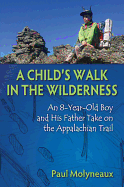
| Publisher: | Stackpole Books | |
| Genre: | Sports & Recreation, Biography & Autobiography, Regional, Personal Memoirs, Nature, Hiking | |
| ISBN: | 9780811711784 | |
| Pub Date: | February 2013 | |
| Price: | $19.95 |
| Biography & Memoir |
by Paul Molyneaux, illust. by Asher Molyneaux
Adventure tale, heroes' journey, environmental treatise, inspirational memoir--Paul Molyneaux's A Child's Walk in the Wilderness is all these and more. Temporarily unemployed and struggling in his marriage, environmental writer Molyneaux decides to join his eight-year-old son on a hike of the Appalachian Trail. Assuming the trail names Tecolote (owl) and Venado (deer), father and son begin at the midpoint of "the AT," at Harpers Ferry, W.Va., in order to avoid the worst of Lyme disease season. At times, they are joined by Venado's 10-year-old sister (Bluish) and mother (Seaweed), as well as other hikers and like-minded friends who follow along on their Facebook page.
Molyneaux discusses the vision of Benton McKaye, the co-creator of the Appalachian Trail, at every opportunity; "in order to understand life," McKaye wrote, "people need connection to three critical things: community, rural processes, and wilderness." Most people Molyneaux meets have never heard of McKaye but are soon converted by his passion.
Since the first "thru-hike" was completed on the Appalachian Trail 1n 1939, countless individuals have turned to this terrain to cleanse and rejuvenate their minds and souls by exhausting their bodies. Molyneaux continues this tradition in true form, and the pairing of his eight-year-old son's enthusiasm and wonder--and endless questioning--with his own 52-year-old wisdom and keen storytelling produces an inspiring and thought-provoking tale of perseverance and tenacity that will surely inspire others to tackle the AT with their own children. --Kristen Galles blogger at Book Club Classics

| Publisher: | Knopf | |
| Genre: | Literary Criticism, Literary Collections, Books & Reading, Biography & Autobiography, Essays, Personal Memoirs | |
| ISBN: | 9780307961525 | |
| Pub Date: | February 2013 | |
| Price: | $25.95 |
| Biography & Memoir |
by David Shields
David Shields (The Thing About Life Is That One Day You'll Be Dead) once again, in How Literature Saved My Live, tries to convince readers that fiction is dead and that the essay--and perhaps the memoir--are the most authentic genres extant today. In this ongoing crusade, he succeeds in writing personal essays that are clever, entertaining, erudite, funny and genre-bending.
Shields here continues the process of examining, through his writing, every nook and cranny of his psyche. His subjects have ranged from his stutter to his familial relationships, failed love affairs, his take on sports and race--and, in this book, his dogmatic statement that literature is the only stay against oblivion, despair, chaos and the abyss.
What saves all of this from being simply a narcissistic exercise in navel-gazing is that Shields is possessed of a mordant wit and a nicely overstuffed brain. He has read widely. "If you want to write serious books," he says, reflecting on his earlier book Reality Hunger, "you must be ready to break forms." Annie Dillard's The Writing Life, he says, shows us a path to this goal: "She establishes the problem, deepens the problem, suggests 'solutions,' explores the permutations of these solutions, argues against and finally undermines these solutions, returning us to the problem." (Which is, he admits, "pretty much the M.O. of this book as well.")
"I wanted literature to assuage human loneliness," he writes at the end. "Nothing can assuage human loneliness. Literature doesn't lie about this--which is what makes it essential." --Valerie Ryan, Cannon Beach Book Company, Ore.

| Publisher: | Simon & Schuster | |
| Genre: | General, Biography & Autobiography, Historical, Presidents & Heads of State | |
| ISBN: | 9781416587019 | |
| Pub Date: | February 2013 | |
| Price: | $30 |
| Starred | History |
by Jeffrey Frank
The dynamic between an American president and his vice president always seems mysterious, mostly because the latter's role is so loosely defined by the Constitution that it gets reimagined with each administration. Perhaps no such duo in modern history, though, has been quite as odd as the team of Dwight Eisenhower and Richard Nixon. In Ike and Dick, Jeffrey Frank (The Columnist) explains how the affable and beloved Eisenhower held the brooding and bristly Nixon at bay for decades like a distant father--and how the need for both affirmation from his ostensible mentor as well as a desire to escape Ike's massive shadow shaped Nixon's troubling political destiny.
Based in large part on the personal correspondence and histories of the two men and those who knew them, Ike and Dick describes how Eisenhower reluctantly chose the rising-star Nixon for a running mate in 1952 and then made no secret that he considered dumping him during the reelection campaign--and spent the rest of his life vacillating between support and indifference for his former veep. Assuming that Eisenhower's ambivalence must have stoked the younger man's inherent bitterness and paranoia, it's hard not to wonder if Watergate would have happened had Ike treated Dick differently--and it's ultimately to Frank's credit that one comes away sympathizing for Nixon's plight as the red-headed stepchild of the Eisenhower administration. --Cherie Ann Parker, freelance journalist and book critic
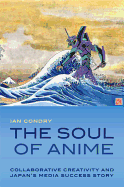
| Publisher: | Duke University Press | |
| Genre: | General, Anthropology, History, Social Science, Cultural, Popular Culture, Asia, Japan | |
| ISBN: | 9780822353942 | |
| Pub Date: | January 2013 | |
| Price: | $23.95 |
| Essays & Criticism |
by Ian Condry
Japanese television broadcasts 90 animated series each week, only a fraction of which cross international lines through commercial distribution, amateur "fansubbing" translations or piracy. Harvard cultural anthropologist and anime connoisseur Ian Condry set out to examine the shifting, relatively unknown world of Japanese animation and discern just what makes this labor-intensive, low-paying niche art form an unbridled success.
The critical essays in The Soul of Anime, each of which could stand as its own case study, dissect the genre at its most basic level to explore the interplay between the creative texts and the social contexts, with an emphasis on the collaborations between the artists and filmmakers who create the characters and worlds and the fans who devour them.
To understand better how this "collaborative creativity" works, Condry immersed himself in the day-to-day workings of the anime studio--attending script meetings, storyboard sessions and voice acting read-throughs--and interviewed some of Japan's most important animators, including Osamu Tezuka (Astro Boy) and Studio Ghibli's Hayao Miyazaki (Spirited Away). On the fan side of the equation, he examines a "Never Never Land" of grown men searching for social acceptance in a harsh world, redefining masculinity through their consumptive love of two-dimensional cartoon characters. It's the global network of avid fans and geeky consumers supporting these doe-eyed characters, he says, that is essential to understanding anime's explosive worldwide success. --Nancy Powell, freelance writer and technical consultant
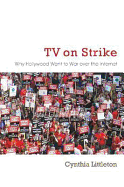
| Publisher: | Syracuse University Press | |
| Genre: | Performing Arts, Television, History & Criticism | |
| ISBN: | 9780815610083 | |
| Pub Date: | February 2013 | |
| Price: | $29.95 |
| Performing Arts |
by Cynthia Littleton
In November 2007, the Writers Guild of America brought much of Hollywood's television production to a standstill with a strike that lasted roughly three months. As Variety TV correspondent Cynthia Littleton describes the core of the WGA's dispute with the Alliance of Motion Picture and Television Producers, the writers wanted to be paid when the studios sold or streamed their shows over the Internet--they hadn't gotten the best of deals when they had a similar dispute over home video distribution back in the '80s, and many of them were itching to right the balance.
TV on Strike is a play-by-play account of the strike's origins and the ebb and flow of the negotiations between the WGA and the AMPTP. Littleton is at her best when she's got behind-the-scenes revelations about the personal drama, like the animosity studio heads felt toward the WGA's leadership--and the growing realization among other top writers in the Guild that they probably did need someone else handling their end of the discussions. There's also a lot of juicy material about tensions between the WGA and Jay Leno, who brought his show back on the air in the midst of the strike but seemed to draw more fire than other late-night hosts who did likewise. (David Letterman, who owns Late Night outright, cut a separate deal with the Guild.) As for the financial issues involved, Littleton observes this strike was likely just "the first act in a high-tension drama" we'll come back to again, as writers and producers continue to adapt to their shifting technological playing field. --Ron Hogan, founder of Beatrice.com

| Publisher: | University of Arkansas Press | |
| Genre: | General, American, Poetry | |
| ISBN: | 9781557286284 | |
| Pub Date: | February 2013 | |
| Price: | $19.95 |
| Poetry |
by Sholeh Wolpe
Iranian-American poet Sholeh Wolpe explores pain, personal and public, in her third collection, Keeping Time with Blue Hyacinths. The book is divided into four parts. The first uses an epigraph taken from Robert Frost: "The best way out is always through." Many of the poems in this section--"The Chill," "Matrimony," "Illusion," "Divorce"--are emotionally painful, as they speak about the breakdown of a marriage and love's leaving, filled with sadness and anger, loss and truth. "What's buried among their bed's decaying springs?" Wolpe asks in "Measure." "He says I love you, she says I love you/ to something she cannot see in the dark."
The second section uses an epigraph from Eliot's "The Rock" ("Where is the life we have lost in living?") to introduce poems about the past, Wolpe's schooling in England, her family and the Iranian home she can't go back to, as she tells us in the poignant "Sanctuary":
"Home is a missing tooth.
The tongue reaches
for hardness
but falls
into absence."
The poems in the third section are more political, like "I Am Neda." A young woman shot to death protesting Ahmadinejad's controversial election speaks: "Leave the Basiji bullet in my heart,/ fall to prayer in my blood." The final section talks about keeping time with spring's blue hyacinths, echoing Frost's simplicity:
"grace in movement, movement in grace,
like the lifting of a hand,
...the rotation of the heart."
--Tom Lavoie, former publisher
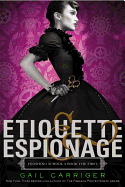
| Publisher: | Little, Brown | |
| Genre: | Girls & Women, General, Fantasy & Magic, Juvenile Fiction, Action & Adventure, Historical | |
| ISBN: | 9780316190084 | |
| Pub Date: | February 2013 | |
| Price: | $17.99 |
| Starred | Children's & Young Adult |
by Gail Carriger
If spunky Lady Sybil from Downton Abbey happened onto a steampunk set, she might look a lot like Sophronia Angelina Temminnick.
It's 1851, and Sophronia tumbles into Gail Carriger's (the Parasol Protectorate series) debut YA novel through a dumbwaiter she deems the ideal eavesdropping conveyance. However, her tampering with the pulley system expels her onto precisely the scene for which she'd hoped to remain a fly on the wall. Her mother, at wit's end, commits 14-year-old Sophronia to Mademoiselle Geraldine's Finishing Academy for Young Ladies of Quality. While in transport, Sophronia must save herself and two others under Mademoiselle Geraldine's guardianship from a group of renegade flywaymen (highwaymen who travel by air). She realizes there's more to Mademoiselle--and the story--than is immediately apparent.
As she does in her adult novels, Carriger peoples Etiquette & Espionage with enchanting werewolves and vampires, and the dynamics among the humans will keep readers turning the pages. There's Sidheag Maccon, a titled young woman raised by wolves--literally, albeit werewolves; and Preshea Buss, who speaks with "clipped elocution, as if each word were being prematurely assassinated." Lady Linette stands out as an especially entertaining instructor. The tale builds to a hilarious and eventful denouement at a coming-out ball hosted by the Temminnick family for Sophronia's younger sister, Petunia. Carriger delivers a grand mix of etiquette and espionage with a dash of humor and enough subterfuge to spring some surprises. --Jennifer M. Brown, children's editor, Shelf Awareness
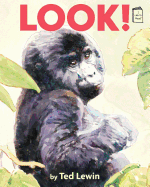
| Publisher: | Holiday House | |
| Genre: | General, Juvenile Fiction | |
| ISBN: | 9780823426072 | |
| Pub Date: | January 2013 | |
| Price: | $14.95 |
| Children's & Young Adult |
by Ted Lewin
Breathtaking watercolor images of animals native to Africa make this addition to the "I Like to Read" series pure pleasure.
The book begins with a full-page image of a wide-eyed boy: "Look!" His command introduces an array of animals engaged in various activities. "Look! An elephant eats" accompanies a picture of a pachyderm pulling branches with its trunk. Have you ever thought about how "giraffes drink?" Author-artist Ted Lewin depicts them with front legs splayed so they can lower their extra-long necks to a pool of water. A gorilla's fur seems to shimmer as it hides among thick, leafy vines.
Lewin captures the animals as if in a candid photo with a zoom lens. For "Wild dogs listen," they stand at attention, their ears perked, their necks taut. You can almost feel the dust fly as a herd of zebras stampedes across two double-page spreads ("Zebras run"), and feel the water as "hippos splash." The action comes full circle when Lewin returns to the boy at play, surrounded by his stuffed animals--many of them featured in Lewin's glorious nature scenes. The story closes with an image of the young hero ("A boy dreams").
The animals go through many of the activities a child experiences in the course of his or her day, so parents can help children make that connection during mealtimes or bathtime or be encouraged to listen attentively, like the wild dogs. --Jennifer M. Brown, children's editor, Shelf Awareness